Burgers are amazing. Yes, we love ribs and brisket … and chicken paprikash, but there’s just something about a properly made burger. And a stuffed burger? One that is done correctly; well, that’s just one step better. Stuffed burgers are a blank canvas. The fillings can be as simple as onions and cheddar cheese or can range further afield, with things like feta cheese and roasted red peppers.
Making them correctly, though. That’s another thing. Any would-be gourmet can chuck a handful of ingredients into a ball of meat and call it a stuffed burger, but making one well takes a little more care. It’s not hard, mind you. You just have to do it right. In this post, we aim to give you the tools you need to make amazing stuffed burgers at home, including the temps you need to sear them to juicy, tasty perfection.
Careful temperature control with both an infrared thermometer and a super-fast instant read, like Thermapen® ONE, leads to perfect results. We have the thermal tips you need for the perfect sear and a deliciously decadent filling. Read on and find out how.
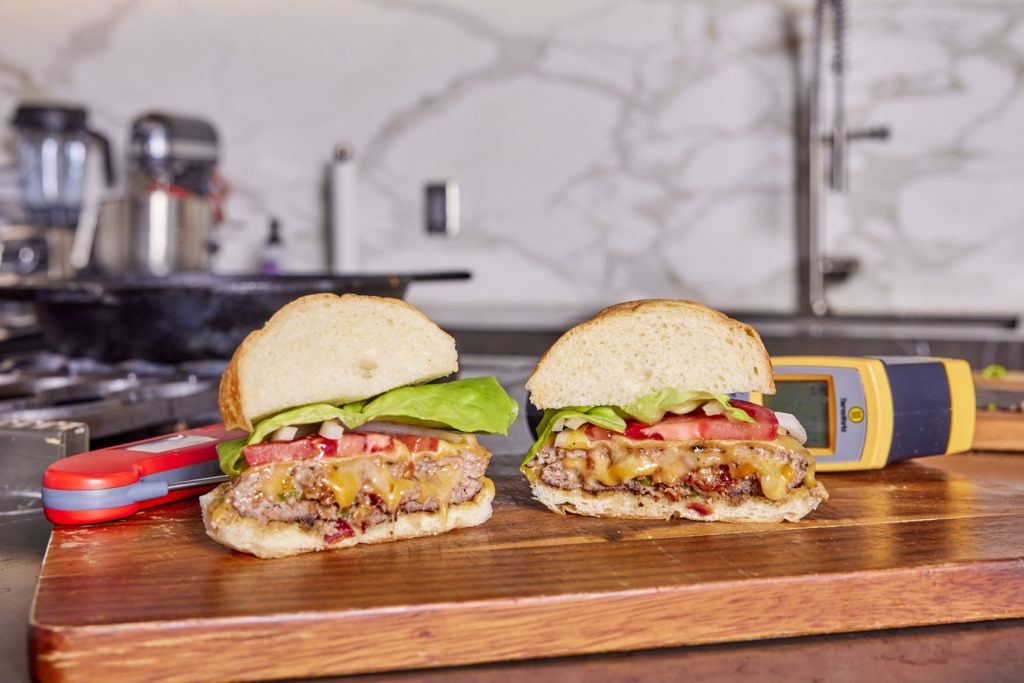
The basics: stuffed burger construction
One mistake people make when they try to stuff burgers is going too big. (Yes, yes, we hear you grumbling. But you don’t need a full-pound burger stuffed with a half-pound of ham. If you’re that hungry, eat a few burgers, each with a different flavor combination.) Better stuffed burgers are an exercise in restraint and balance. To make them, use two small patties that you place the fillings between, then crimp their edges together. Two two-ounce balls of meat make a quarter-pound burger that also has fillings inside of it, and that’s a real treat!
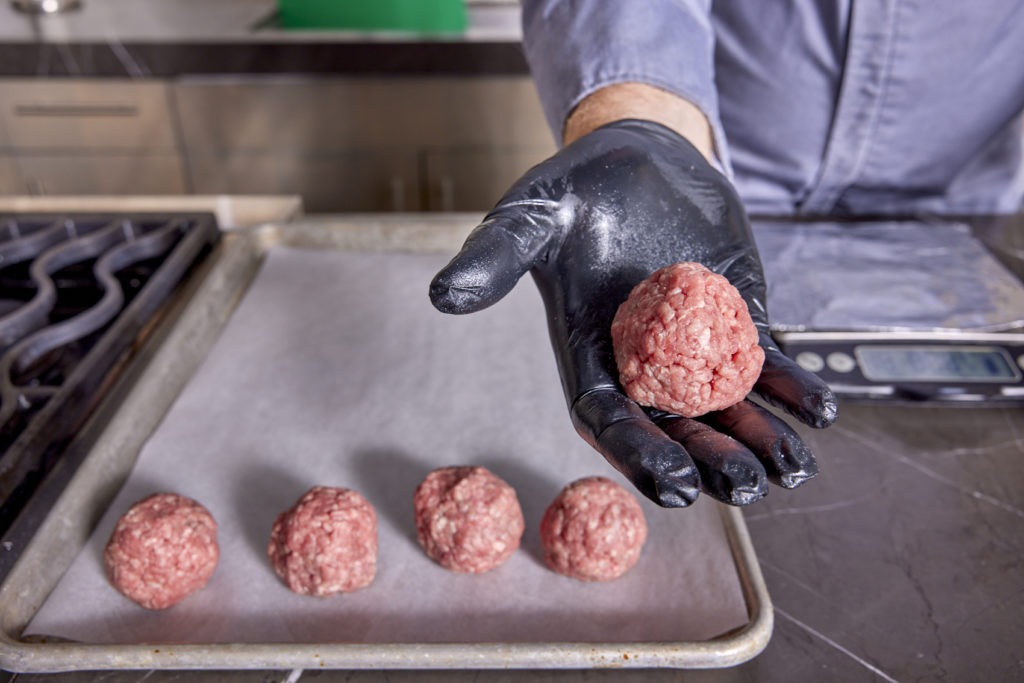
Thin patties have real advantages. First, you have a higher crusty-seared surface-to-meat ratio, which is always good. But there are other logistical reasons for it. If you stuff it with cheese—which we always do!—a thick burger can overcook by the time the cheesy stuffing can melt fully. And half-melted, rubbery cheese does not a good burger make.
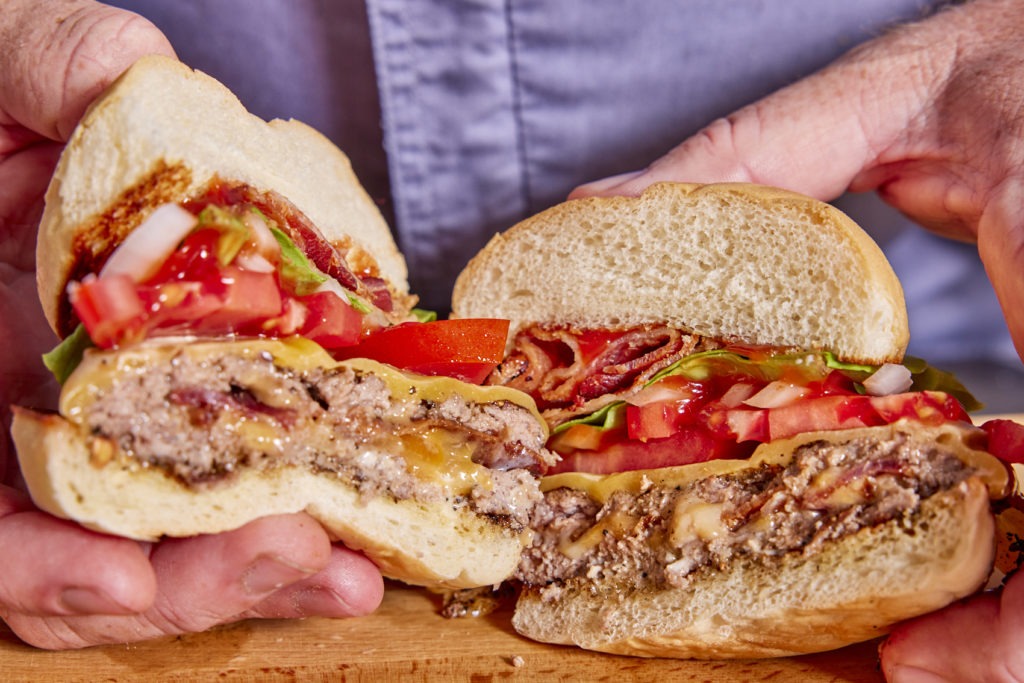
Stuffed burger difficulties
Kenji Lopez-Alt, in a post that has since been lost to the vagaries of the internet, once described the challenges of cooking a stuffed burger. One is having perfectly cooked meat (not overcooked) with filling ingredients that have been fully heated. Another is the difficulty of getting a perfect sear without losing all your ingredients to the pan. How do we overcome these?
Three Tips for Cooking Stuffed Burgers
1. Precook the Filling Ingredients
As we said above, you should be using thin patties to make your burgers. But thinner patties are easily overcooked, especially if you want melted gooey cheese inside.
Because the thin layers of meat won’t take very long to cook. It’s a bad idea to use raw onions or mushrooms. The fillings will still have a firm, raw texture and flavor by the time the meat is done cooking. Completely cook ingredients like onions, peppers, or mushrooms prior to stuffing your burgers. and you’re more likely to get the flavors and textures you want.
2. Use the Right Cheese
Use shredded cheese or American cheese slices. American cheese melts very readily to an ooey-gooey consistency. Shredded cheese has a greater amount of exposed surface area and will melt faster than sliced hard cheeses. We used a shredded cheddar blend for our stuffed burgers.
Again, thin patties don’t take long to cook, so we need cheese that melts readily. Blue cheese and feta will work great; just be sure to crumble them, rather than using big chunks. You can use a hard cheese like parm for “seasoning” inside, but it won’t melt into ooey-gooey cheese.
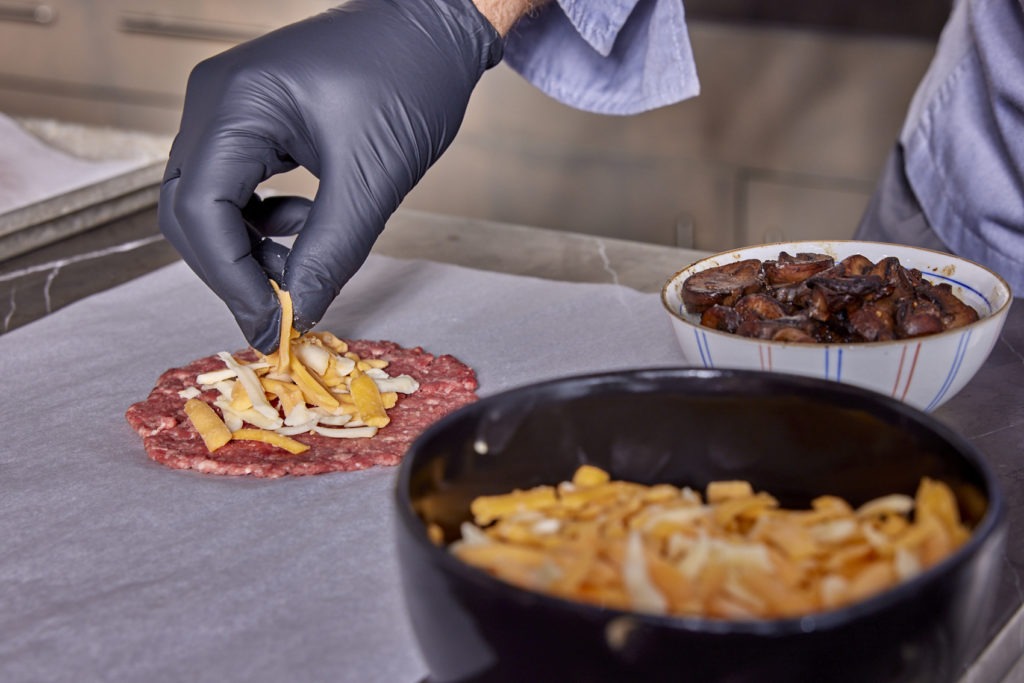
3. Grind Your Own Meat (optional)
When you grind your own meat it can be cooked to a lower doneness temperature and still be food-safe. Using the leftover chain meat from filet mignon and mixing it with ground chuck is a great way to go. For more information on the benefits of grinding your own meat for burgers, check out our post Grind your Own Burgers.
Don’t want gray, overcooked hamburger meat? Cook your stuffed burgers to medium rare—125-135°F (52-57°C)—if grinding your own meat, or to 160°F (71°C) if using pre-ground beef. The lower you can cook your burgers safely, the juicier they will be.
➤ Thermal Tip: Carryover Cooking with Hamburgers
Even though hamburger patties are small, there will still be a small rise in temperature after being removed from the heat source because the grilling or pan-searing temperatures are so high. Plan on 3-5°F (1-2°C) in carryover cooking.
Use An Infrared Thermometer for Perfectly Seared burgers
A Flavorful, Crisp Crust
When we think of the flavor that we want on a burger, it’s the flavor of the sear. The browning of meat, called the Maillard reaction, is not caramelization, but a specific reduction of amino acids. It creates hundreds of delicious flavor molecules and creates that delicious crusty texture. This reaction begins at about 230°F (110°C) and becomes very active at 350°F (177°C). (For more information about the Maillard reaction, read our post, Thermal Tips: Searing Meat.)
Infrared Thermometers: Measuring Temperature From a Distance
The trick with cooking these stuffed burgers is to get a great sear while maintaining a perfectly cooked, juicy interior. For this, you need high heat. But how do you know when your pan is ready? Saying it’s hot enough to make water sputter is … not precise. Saying it feels “hot when your hand is X inches away” is … subjective. You can, however, get a real, actual measure of your pan’s temperature, and you should!
Use an IR Thermometer with a High-Temperature Range
For the best sear on your burgers, the pan needs to be at a high temperature (500-550°F [260-288°C]). The best way to quickly and accurately measure surface temperatures is with an infrared thermometer like the Hi-Temp Industrial IR w/Circle Laser (IRK-2). We chose the IRK-2 because its thermal range (-58–1,022°F [-50–550°C]) is easily high enough to measure the hot, searing temperatures.
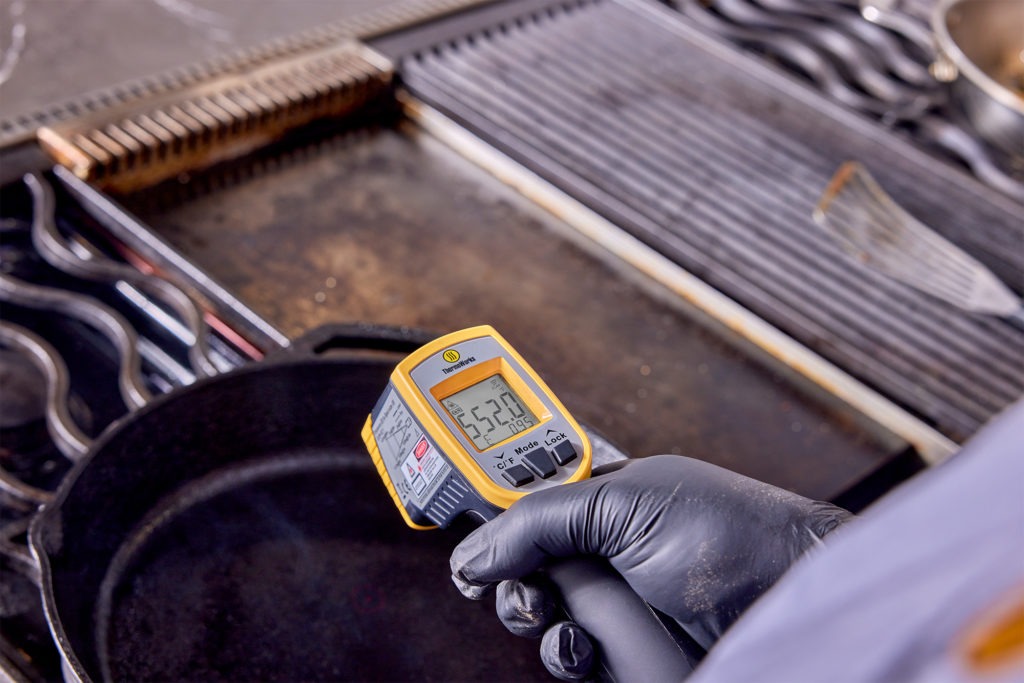
Note that we recommend using a cast iron pan for cooking these burgers. The thermal properties of cast iron are in every way superior for this task. Plus, cast iron is the opposite of reflective, so it has a very high emissivity rating. (Emissivity is a measure of a material’s ability to emit infrared energy. It is measured on a scale from just about 0.00 to just below 1.00.) The emissivity of cast iron is nearly 1.00, which means it’s super easy for an infrared thermometer to read the temperature accurately.
Check out our post, Infrared Thermometer Basics & Best Practices for more tips on how to use an infrared thermometer.
➤ Thermal Tip: Infrared Thermometers and Shiny Pans
If you do use a stainless steel or aluminum pan to sear your stuffed burgers, take a surface temperature reading with an infrared thermometer after coating the pan with a thin layer of vegetable oil. It has an emissivity rating of 0.95 and will yield accurate readings.
Temping stuffed burgers
We’ve talked about when burgers are done (lower for fresh-ground meat, higher for meat that may have been in the meat department for a day or two before you bought it). And we’ve noted more than once that these patties are quite thin in their middles (thicker towards the edges where they join). That thinness makes them perfect candidates for temping with your Thermapen One. Your Thermapen’s tiny sensor tip means it can take temperatures where other thermometers cannot, like in ultra-thin burger layers! Check the temp of your burgers in a couple spots before you remove them from heat for assurance that everything is safe.
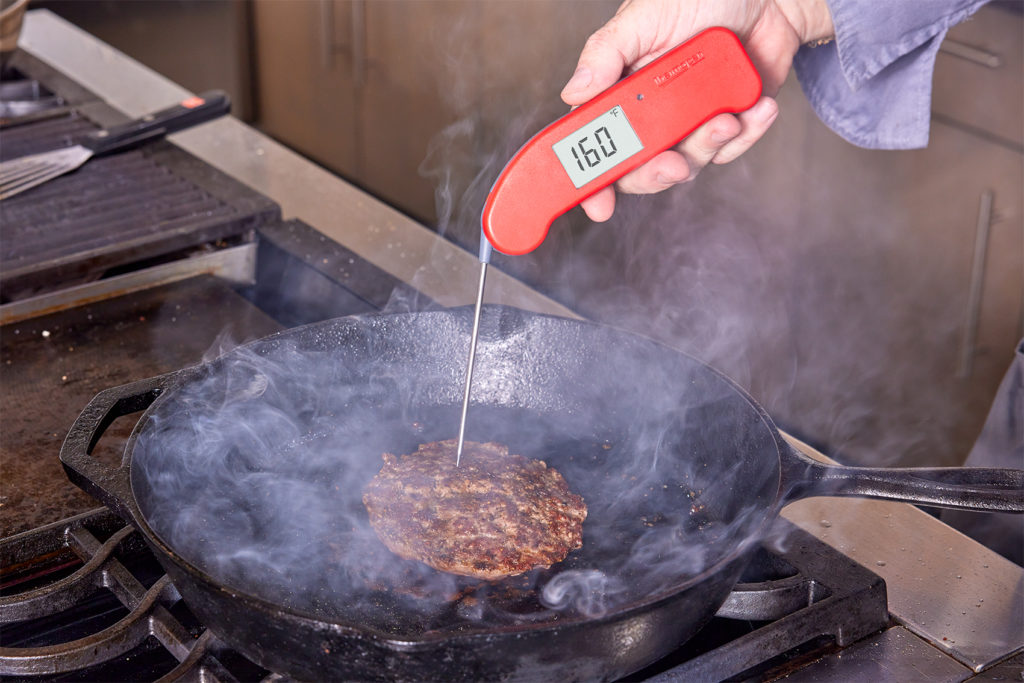
For the best stuffed burgers remember to precook your ingredients, use the freshest ground beef and shredded cheese and check your pans’ temperature! Follow these tips, and your juicy stuffed burgers are only a few temperature spot-checks away!
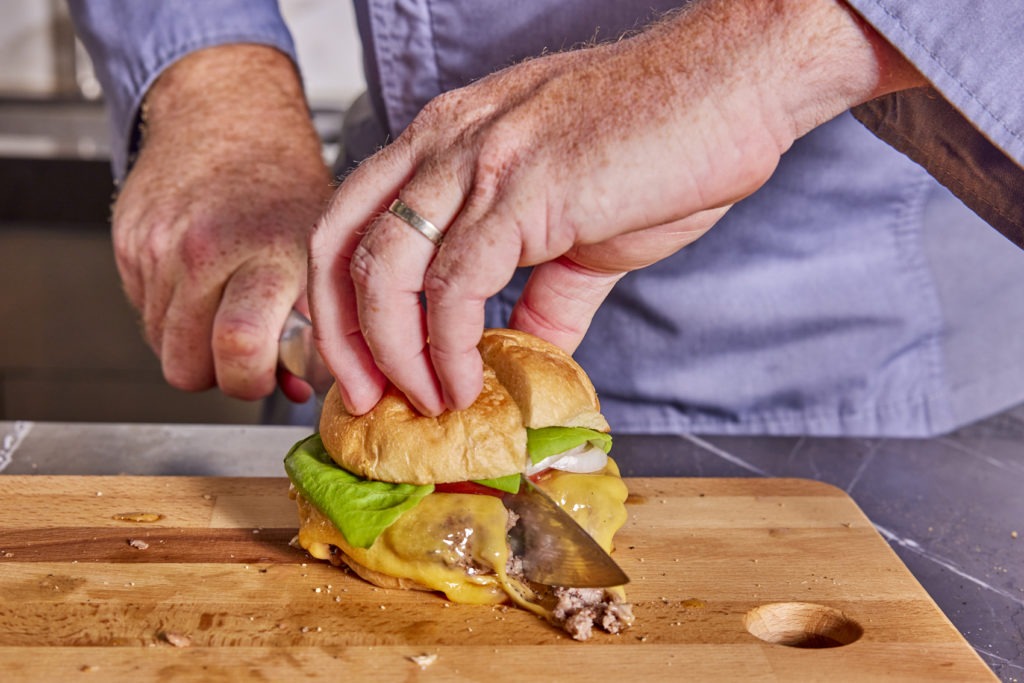
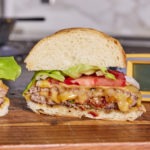
Seared, Stuffed Burgers Recipe
Description
Stuffed burgers, based on tips from J. Kenji Lopéz-Alt.
Ingredients
- 2 lb 80/20 ground beef
- Salt and pepper to taste
- 2 Tbsp vegetable oil for the cast iron pan
Fillings (these are ideas)
- Shredded cheese (swiss, cheddar, pepper jack)
- Sliced, sautéed mushrooms
- Caramelized onions
- Bacon, cooked and crumbled into bits
- Sauteed jalapeño slices
Instructions
- Scale the ground beef into 2 oz portions.
- Flatten out each 2 oz portion into discs about 1/4″ thick, or a little less. You can use a split freezer bag and a plate to flatten them into thin patties.
- Arrange filling ingredients in the center of half of the patties leaving about a 1/2 inch border around the edge so you can seal it shut. Don’t overdo it! If the filling extends to the edge of the patty it will not seal completely, and will likely ooze out the side of the burger as it cooks.
- Top with another flattened meat patty and pinch around the outer edge to seal well. Once you pinch the edges together your stuffed patty may look a bit like ravioli. Just shape the outer edges back into a uniform patty shape. Set the burger patties aside while you prepare your pan.
- Preheat your cast iron pan over high heat with just enough vegetable oil to coat the bottom of the pan.
- Heat until it reaches 500-550°F (260-288°C). The oil will start to smoke. Check the temperature of the pan with an infrared thermometer like the ThermoWorks IRK-2.
- Season the burgers with salt and pepper right before placing into the pan.
- Cook the burgers about 2-3 minutes per side.
- Spot-check the thin layers of meat with the very tip of your Thermapen ONE. Verify temperatures in multiple areas of the burger since there are varying thicknesses throughout.
- The meat’s lowest temperature should be 130-135°F (54-57°C) for medium rare, and 160°F (71°C) if you’re using pre-ground beef.
- Once the burgers have reached their pull temperature, remove from the cast iron skillet and allow to rest for about 5 minutes before assembling and serving.
- Enjoy!
Stuffed Burger Filling Combinations:
Here are some fun ideas of filling to stuff your burgers with:
- Bleu cheese and hot sauce
- Mozzarella, tomato, and basil
- Spinach and Swiss cheese
- Feta cheese, lemon juice, and oregano
- Pepper jack cheese, roasted bell peppers, and caramelized onions
- Gorgonzola and sun-dried tomatoes
- Smoked gouda, barbecue sauce, and caramelized onions
- Horseradish, steak sauce, Swiss cheese
Shop now for products used in this post:
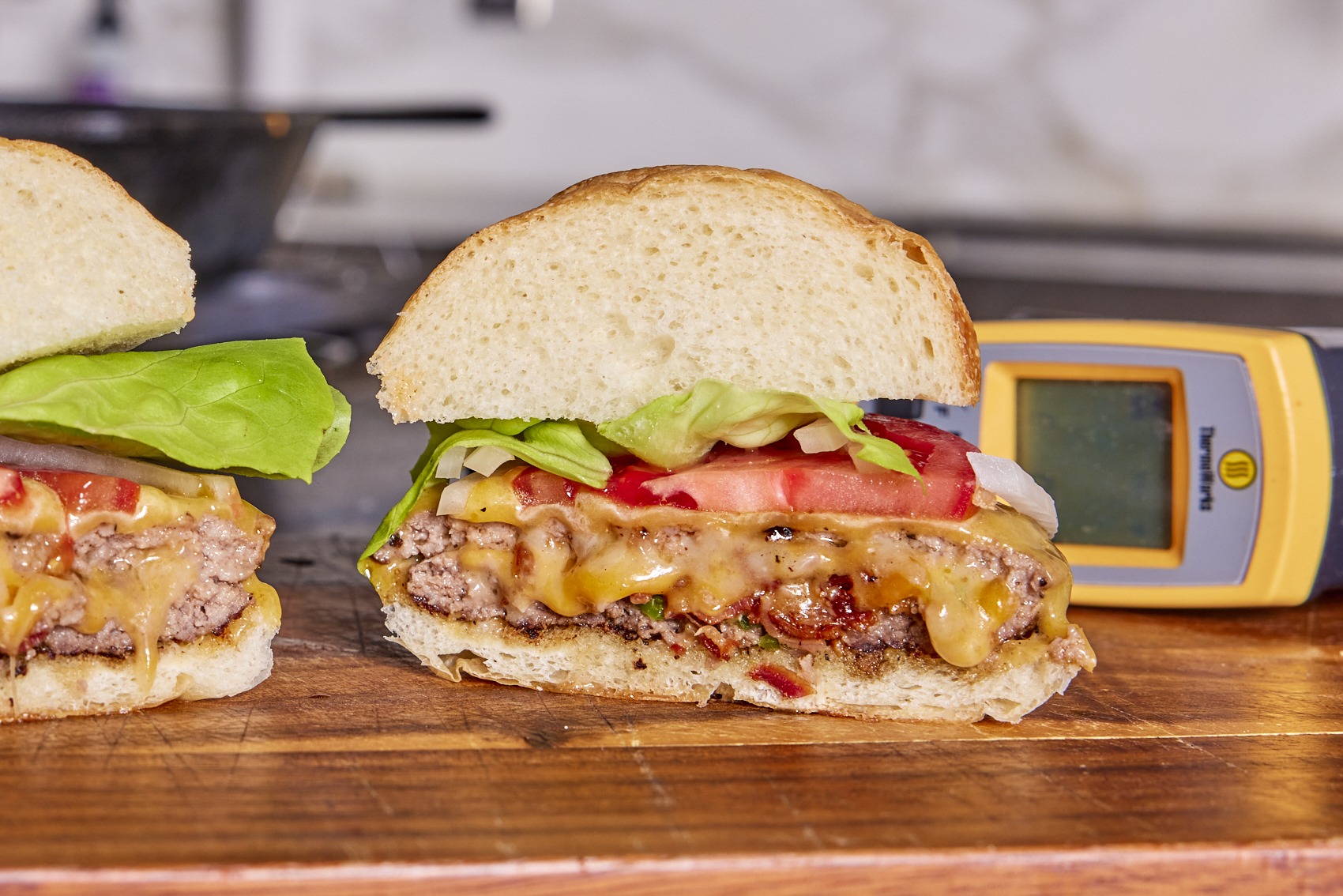
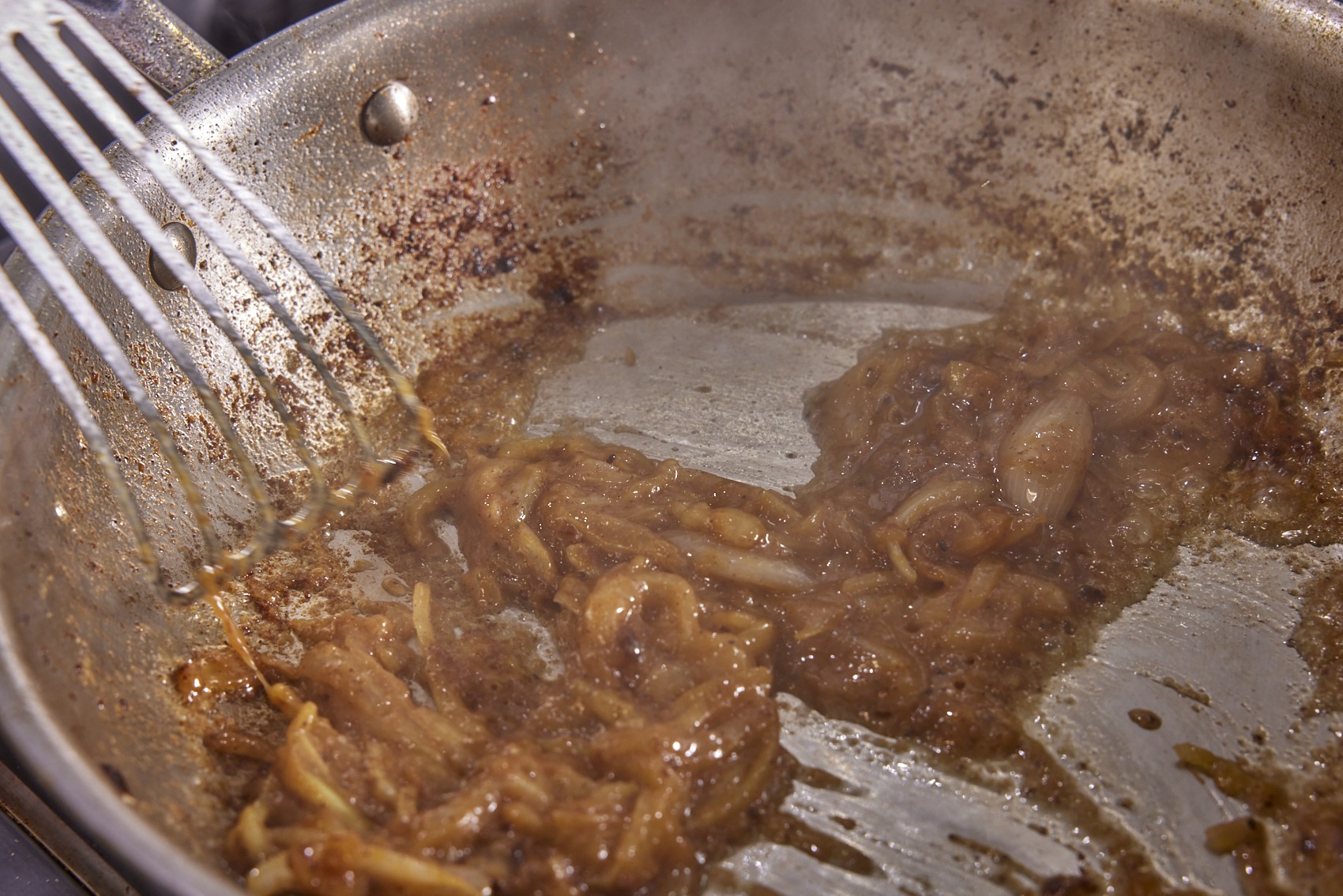
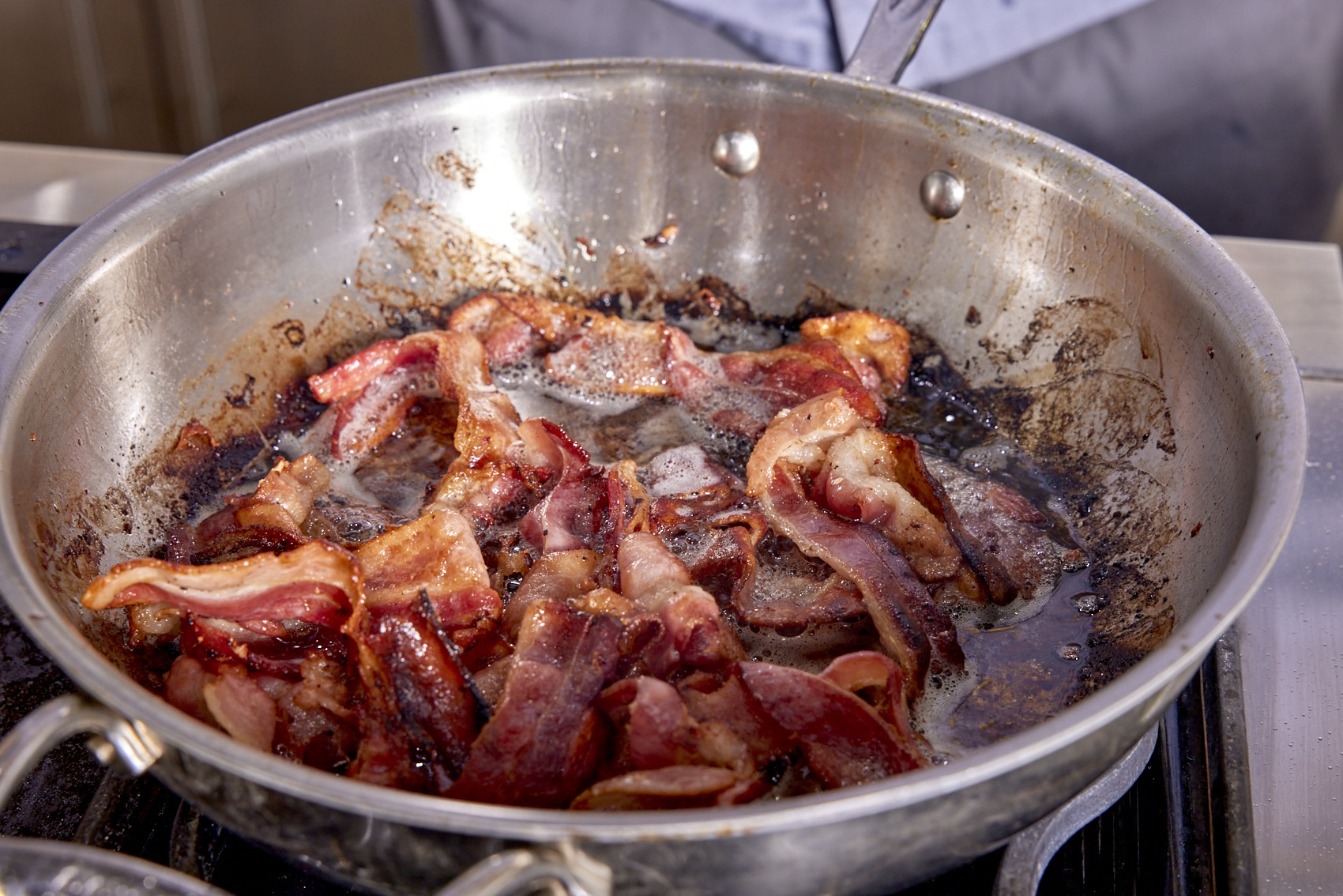
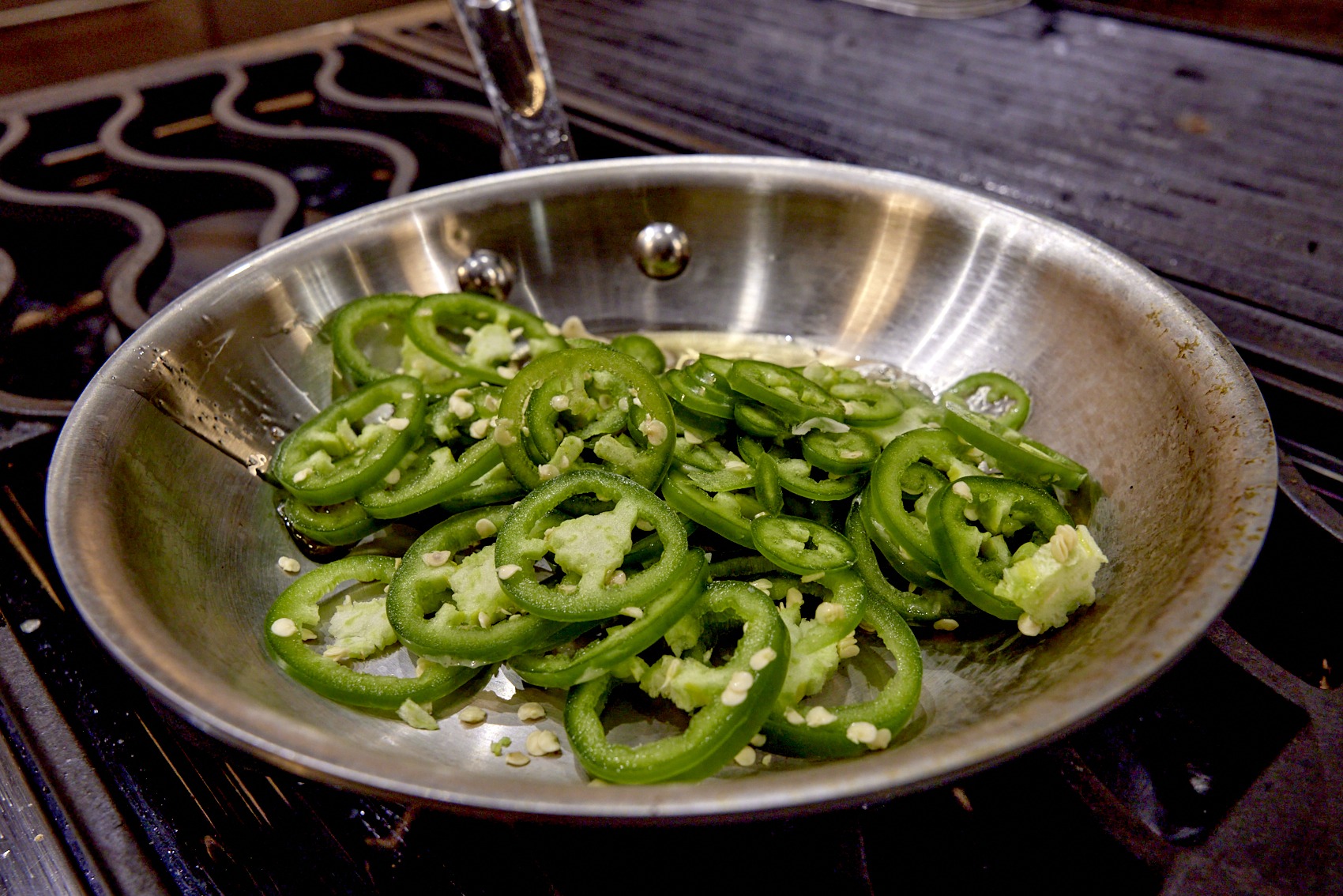
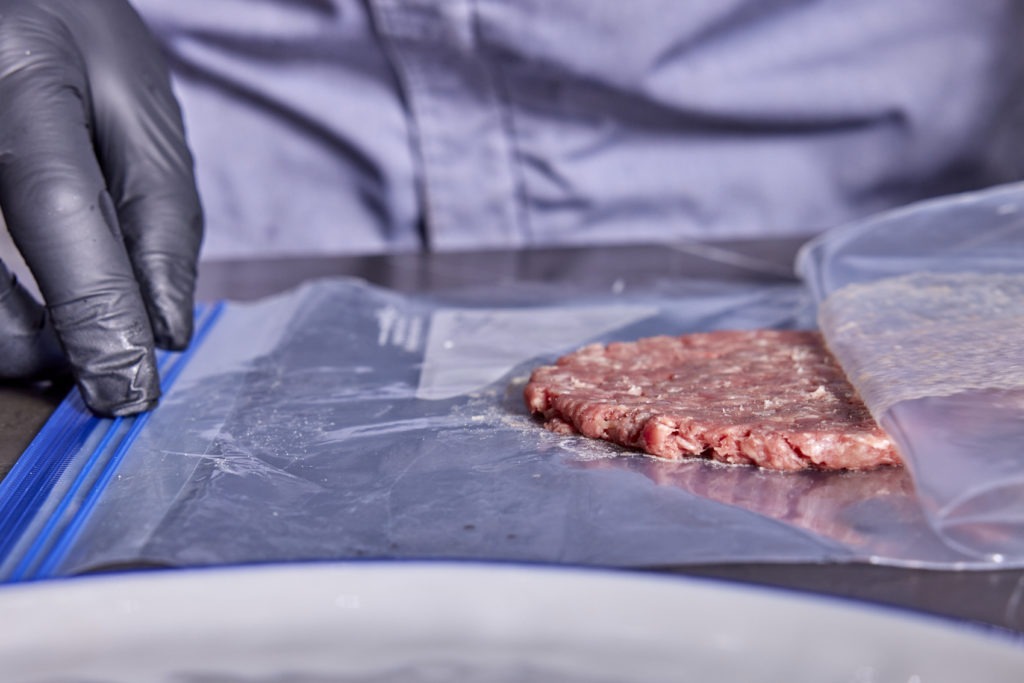
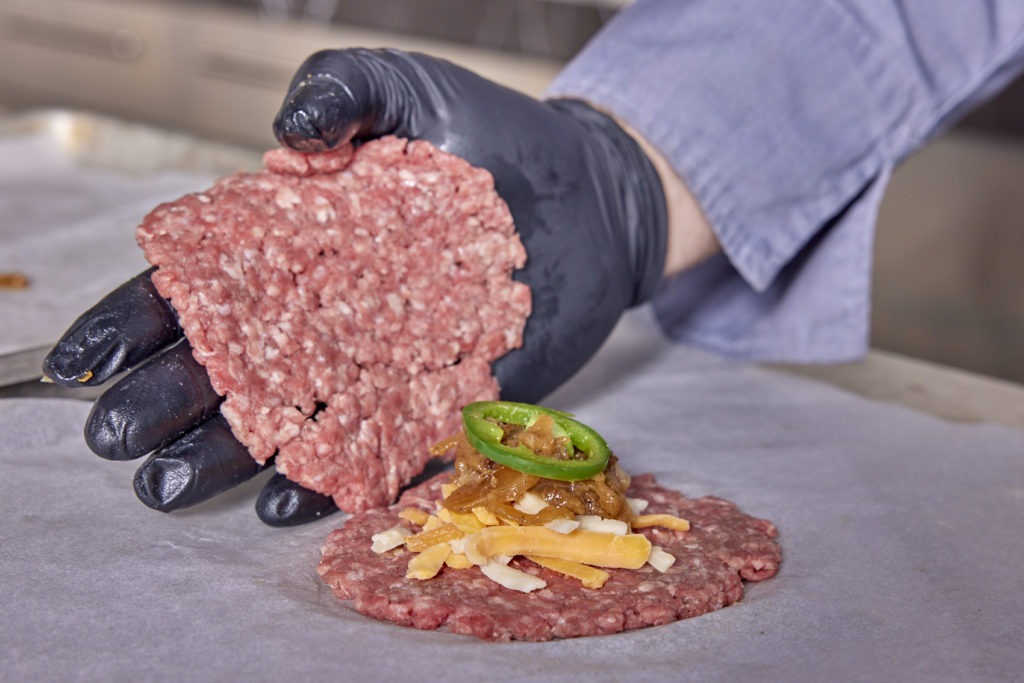
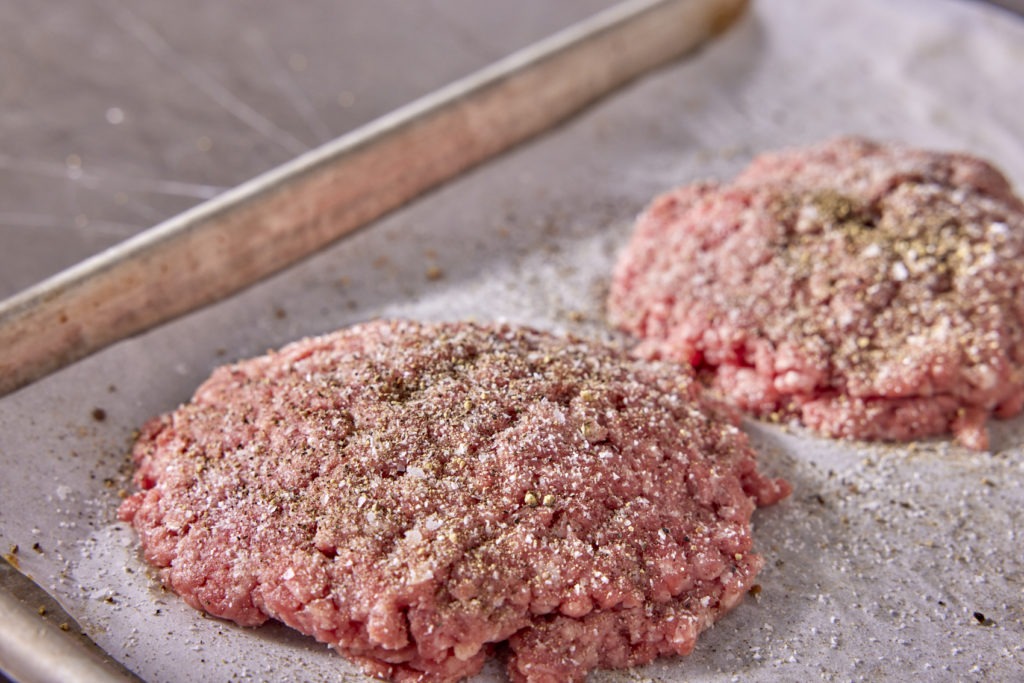
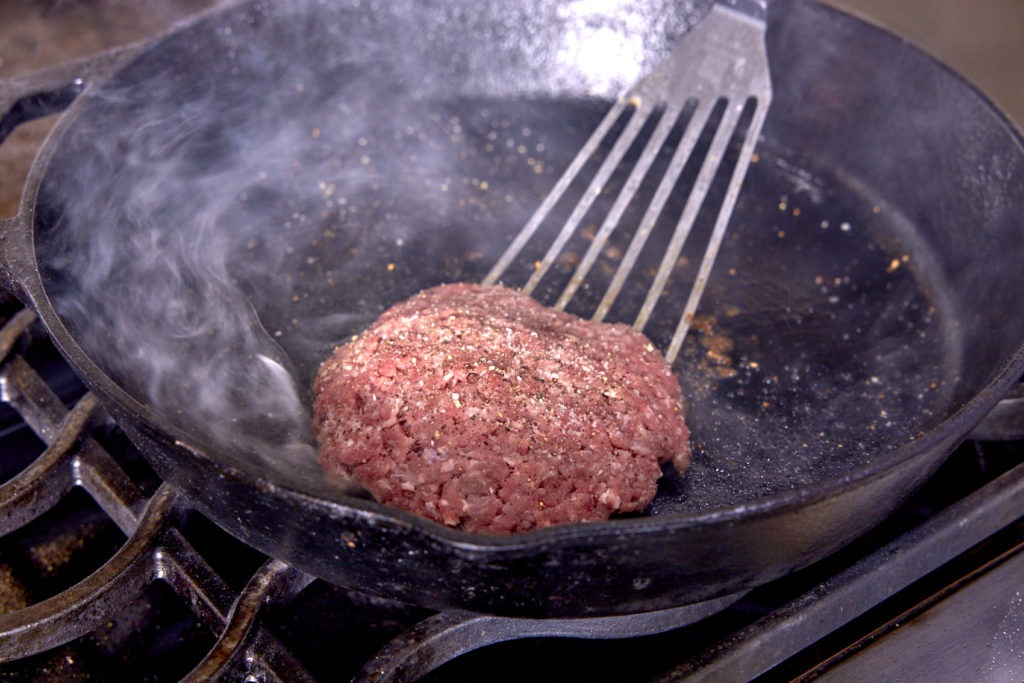
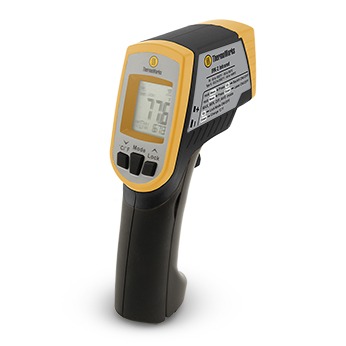


Joan M. Johnson says
Love your posts. Thank you.
Susan says
How about cooking on a barbeque? What are the differences, if any?
Kim says
Susan,
A little smoke can always improve a recipe involving meat! Smoke your stuffed burgers at 225-250°F until their pull temperature is reached (this can take up to 45 minutes depending on your cooker’s temperature and the thickness of your stuffed burgers).
Happy Cooking!
-Kim
John says
How about grilling them. Will that work? I don’t have a smoker, just a gas grill.
Martin says
Grilling should work fine! Just watch out for flare-ups.